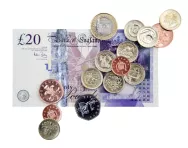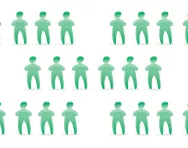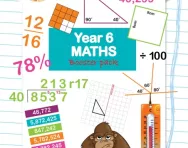Important update from TheSchoolRun
For the past 13 years, TheSchoolRun has been run by a small team of mums working from home, dedicated to providing quality educational resources to primary school parents. Unfortunately, rising supplier costs and falling revenue have made it impossible for us to continue operating, and we’ve had to make the difficult decision to close. The good news: We’ve arranged for another educational provider to take over many of our resources. These will be hosted on a new portal, where the content will be updated and expanded to support your child’s learning.
What this means for subscribers:
- Your subscription is still active, and for now, you can keep using the website as normal — just log in with your usual details to access all our articles and resources*.
- In a few months, all resources will move to the new portal. You’ll continue to have access there until your subscription ends. We’ll send you full details nearer the time.
- As a thank you for your support, we’ll also be sending you 16 primary school eBooks (worth £108.84) to download and keep.
A few changes to be aware of:
- The Learning Journey weekly email has ended, but your child’s plan will still be updated on your dashboard each Monday. Just log in to see the recommended worksheets.
- The 11+ weekly emails have now ended. We sent you all the remaining emails in the series at the end of March — please check your inbox (and spam folder) if you haven’t seen them. You can also follow the full programme here: 11+ Learning Journey.
If you have any questions, please contact us at [email protected]. Thank you for being part of our journey it’s been a privilege to support your family’s learning.
*If you need to reset your password, it will still work as usual. Please check your spam folder if the reset email doesn’t appear in your inbox.
What is scale factor?

What is a scale factor?
We use scale factor when we talk about increasing the size of a 2D shape. The size by which we make the shape larger is described by its scale factor.
For example, this rectangle has the measurements 5cm and 2cm (not shown to scale):
If we increase this rectangle by a scale factor of 2, we double both the sides:
If we increase the original rectangle by a scale factor of 3, then we multiply each measurements by 3 to end up with this shape:
When do children learn about scale factor in primary school?
Children learn about scale factor in Year 6 maths. They may be given a shape and then asked to increase it by a certain scale factor, or they may be given a question like the following:
Look at square B. What scale factor has square A been increased by?

Your child would need to think about what 2cm has been multiplied by to make 8cm and use their knowledge of times tables to work out that the square had been increased by a scale factor of 4.
Scale factor can be used with various different shapes.
The irregular pentagon A, on the left, has been increased in size to make B, which has all the same angles as A, but sides that have all been increased by the same scale factor. Can you work out what the scale factor is?

Answer: 2
Your child may be asked to solve a problem where they are only given part of the information and have to 'work backwards', for example:
A triangle was increased by a scale factor of 3 resulting in this new shape:
What were the measurements of the original triangle?
Answer: 3cm by 5cm by 6cm
Learning about scale factor at home
The concept of scale factor is closely linked to ratio, proportion and percentages, where various amounts must be multiplied or divided by the same number to increase or decrease a quantity. Your child will need to understand the relationship between these concepts.
Here are some example of activities they may have to carry out at school, related to scale factor; a lot of them are very useful in the everyday maths we depend on at home, too!
- Increasing all the ingredients in a recipe by multiplying each one by the same number in order to feed a larger group of people
- Increasing amounts by a certain percentage, or finding a percentage of an amount.
- Working out ratios and proportions of different groups, using their knowledge of times tables.









